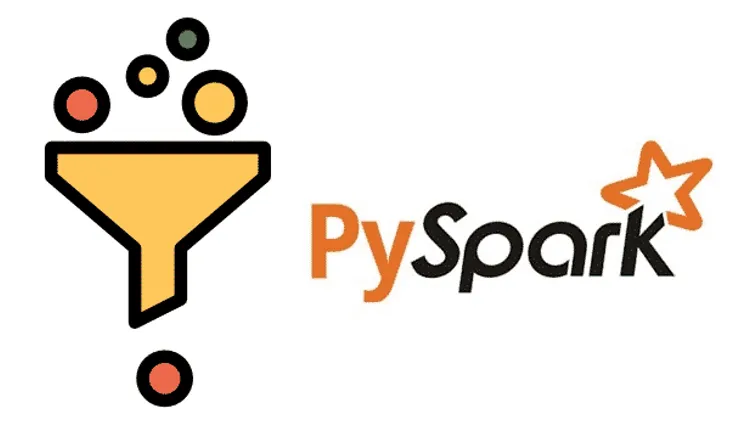
Unraveling the Power Trio in Big Data: Python, Apache Spark, and Hadoop
In the fascinating world of Big Data, three key players stand out for their fundamental role in managing and processing immense amounts of information: Python, Apache Spark, and Hadoop. But, how do these three giants interact to handle the demands of large-scale data processing? In this post, we’ll explore the unique role and interconnection among these powerful tools, illustrating how together, they form a technological symphony that drives some of the most advanced data solutions of our time.
When you run a Python script for Apache Spark, you’re interacting with various technologies working together.
Python, the programming language known for its simplicity and versatility, is more than just a means to write code. In the context of Big Data, it acts as our bridge to Apache Spark, allowing us to intuitively define how we want our data to be processed and analyzed.
- Python:
- Role: Python acts as the programming language you use to write your script. It is the medium through which you give instructions to process data and perform calculations.
- How It Works in This Context: PySpark APIs, which are the Python interface for Spark, are used to interact with Spark. These APIs enable leveraging Spark’s capabilities, such as in-memory processing and distributed operations, by writing code in Python. The Python code defines the operations to be carried out, but it is Spark that actually executes these operations on a large scale.
But the real action takes place elsewhere. This is where Apache Spark comes into play. Imagine a conductor skillfully managing a multitude of instruments to create a harmonious symphony. Spark takes our instructions written in Python and executes them through efficient and distributed processing. Whether we’re processing data in real time, performing complex analyses, or training machine learning models, Spark is the force that drives these calculations with impressive speed and scale.
-
Apache Spark:
- Role: Spark is a distributed data processing engine. Its primary function is to perform intensive calculations on data, especially in large distributed datasets.
- How It Works in This Context: When you run your Python script, Spark takes the instructions and executes them in a distributed manner across a cluster. Spark can perform operations in parallel across multiple nodes of a cluster, managing the necessary communication and synchronization between the nodes. This makes it very efficient for big data processing. Spark includes various libraries and APIs for different types of data processing tasks, such as SQL, data streaming, machine learning, and graph processing.
But where are all these data that Spark processes stored? This is where Hadoop comes into play, more specifically, its file system, HDFS (Hadoop Distributed File System). HDFS allows for storing massive amounts of data in a way that is accessible and optimal for Spark’s distributed processing. Although Spark is agnostic regarding the data source, its integration with Hadoop makes it particularly powerful for handling large volumes of data.
-
Hadoop (specifically the Hadoop File System, HDFS):
-
Role: Hadoop, and more specifically its storage component (HDFS), is used to store large volumes of data in a distributed manner. Spark can read and write data to and from HDFS.
-
How It Works in This Context: Although Spark can work with many different data sources, it is often used with HDFS. HDFS allows for the storage of data in a distributed format suitable for the parallel processing that Spark performs. Additionally, Spark can utilize other components of the Hadoop ecosystem, such as YARN, for cluster resource management.
-
YARN (Yet Another Resource Negotiator), the resource manager of Hadoop, can be used to manage the resources of the cluster on which Spark runs, although Spark can also run on other managers like Mesos or Kubernetes, or on its own standalone cluster.
-
Python is our scriptwriter, Spark the director, and Hadoop the stage where this great work unfolds.
When a Python script for Spark is executed, Python is used to write data processing logic, Spark to execute those operations efficiently and in a distributed manner across a cluster, and possibly Hadoop (HDFS) for storing and accessing large distributed data sets.
Therefore, Python enables writing high-level code for complex data processing operations, Spark handles the efficient execution of these operations in a distributed environment, and Hadoop contributes additional storage and resource management capabilities, if utilized.
Español
En el fascinante mundo del Big Data, tres actores clave destacan por su papel fundamental en el manejo y procesamiento de inmensas cantidades de información: Python, Apache Spark y Hadoop. Pero, ¿cómo interactúan estos tres gigantes para manejar las demandas del procesamiento de datos a gran escala? En esta publicación, exploraremos el papel único y la interconexión entre estas poderosas herramientas, ilustrando cómo juntas forman una sinfonía tecnológica que impulsa algunas de las soluciones de datos más avanzadas de nuestro tiempo.
Cuando ejecutas un script de Python para Apache Spark, estás interactuando con diversas tecnologías que trabajan juntas.
Python, el lenguaje de programación conocido por su simplicidad y versatilidad, es más que solo un medio para escribir código. En el contexto del Big Data, actúa como nuestro puente hacia Apache Spark, permitiéndonos definir intuitivamente cómo queremos que nuestros datos sean procesados y analizados.
- Python:
- Rol: Python actúa como el lenguaje de programación que utilizas para escribir tu script. Es el medio a través del cual das instrucciones para procesar datos y realizar cálculos.
- Cómo Funciona en Este Contexto: Las API de PySpark, que son la interfaz de Python para Spark, se utilizan para interactuar con Spark. Estas API permiten aprovechar las capacidades de Spark, como el procesamiento en memoria y las operaciones distribuidas, escribiendo código en Python. El código en Python define las operaciones a realizar, pero es Spark el que ejecuta realmente estas operaciones a gran escala.
Pero la verdadera acción tiene lugar en otro lugar. Aquí es donde entra en juego Apache Spark. Imagina a un director de orquesta que maneja hábilmente una multitud de instrumentos para crear una sinfonía armoniosa. Spark toma nuestras instrucciones escritas en Python y las ejecuta a través de un procesamiento eficiente y distribuido. Ya sea que estemos procesando datos en tiempo real, realizando análisis complejos o entrenando modelos de aprendizaje automático, Spark es la fuerza que impulsa estos cálculos con una velocidad y escala impresionantes.
-
Apache Spark:
- Rol: Spark es un motor de procesamiento de datos distribuido. Su función principal es realizar cálculos intensivos en datos, especialmente en conjuntos de datos distribuidos grandes.
- Cómo Funciona en Este Contexto: Cuando ejecutas tu script de Python, Spark toma las instrucciones y las ejecuta de manera distribuida en un clúster. Spark puede realizar operaciones en paralelo en múltiples nodos de un clúster, gestionando la comunicación y sincronización necesarias entre los nodos. Esto lo hace muy eficiente para el procesamiento de grandes datos. Spark incluye varias bibliotecas y APIs para diferentes tipos de tareas de procesamiento de datos, como SQL, transmisión de datos, aprendizaje automático y procesamiento de gráficos.
Pero, ¿dónde se almacenan todos estos datos que Spark procesa? Aquí es donde entra en juego Hadoop, más específicamente, su sistema de archivos, HDFS (Sistema de Archivos Distribuido de Hadoop). HDFS permite almacenar grandes cantidades de datos de una manera que es accesible y óptima para el procesamiento distribuido de Spark. Aunque Spark es agnóstico con respecto a la fuente de datos, su integración con Hadoop lo hace particularmente poderoso para manejar grandes volúmenes de datos.
- Hadoop (específicamente el Sistema de Archivos de Hadoop, HDFS):
-
Rol: Hadoop, y más específicamente su componente de almacenamiento (HDFS), se utiliza para almacenar grandes volúmenes de datos de manera distribuida. Spark puede leer y escribir datos desde y hacia HDFS.
-
Cómo Funciona en Este Contexto: Aunque Spark puede trabajar con muchas fuentes de datos diferentes, a menudo se utiliza con HDFS. HDFS permite el almacenamiento de datos en un formato distribuido adecuado para el procesamiento en paralelo que realiza Spark. Además, Spark puede utilizar otros componentes del ecosistema de Hadoop, como YARN, para la gestión de recursos del clúster.
-
YARN (Yet Another Resource Negotiator), el gestor de recursos de Hadoop, se puede utilizar para gestionar los recursos del clúster en el que se ejecuta Spark, aunque Spark también puede ejecutarse en otros gestores como Mesos o Kubernetes, o en su propio clúster independiente.
Python es nuestro guionista, Spark el director, y Hadoop el escenario donde se desarrolla esta gran obra.
Cuando se ejecuta un script de Python para Spark, Python se utiliza para escribir la lógica de procesamiento de datos, Spark para ejecutar esas operaciones de manera eficiente y distribuida en un clúster, y posiblemente Hadoop (HDFS) para almacenar y acceder a grandes conjuntos de datos distribuidos.
Por lo tanto, Python permite escribir código de alto nivel para operaciones de procesamiento de datos complejas, Spark maneja la ejecución eficiente de estas operaciones en un entorno distribuido, y Hadoop contribuye con capacidades adicionales de almacenamiento y gestión de recursos, si se utiliza.
